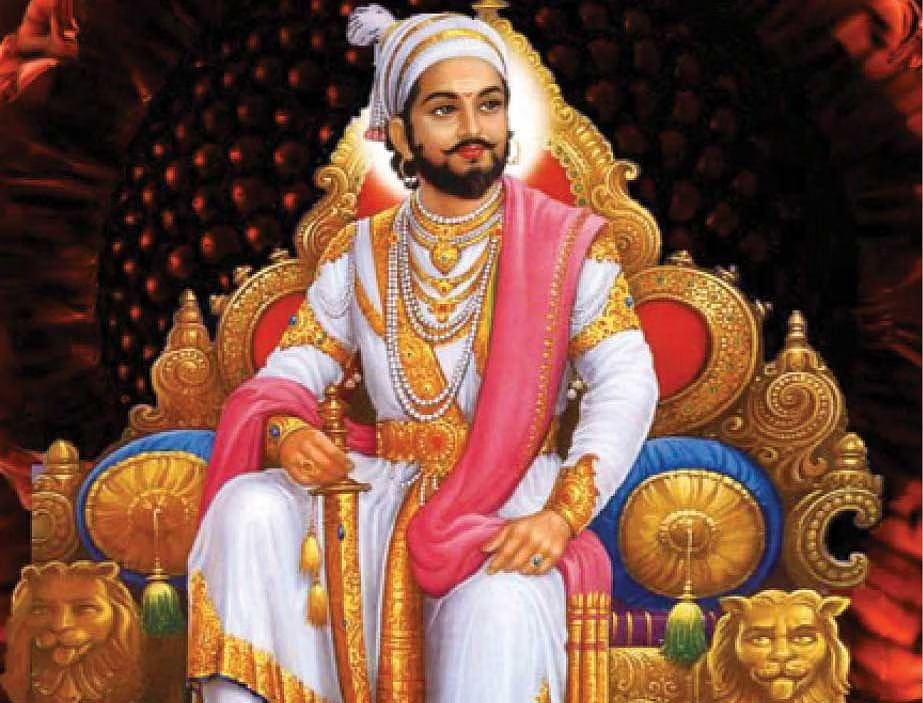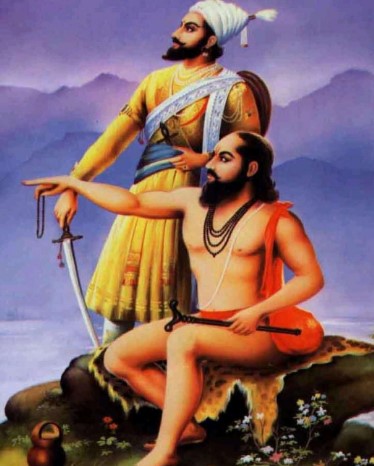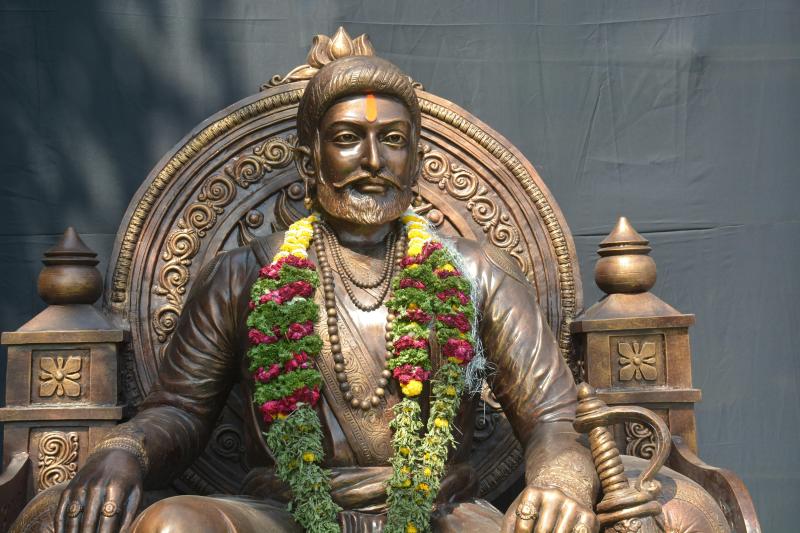
Chatrapathi Shivaji Maharaj
Sree Chatrapati Shivaji Maharaj established a competent and progressive civil rule with the help of a disciplined military and wellstructured administrative organisations. He innovated military tactics, pioneering the guerilla warfare methods (Shiva sutra or ganimi kava), which leveraged strategic factors like geography, speed, surprise and focused pinpoint attacks to defeat his larger and more powerful enemies. From a small contingent of 2,000 soldiers inherited from his father, Sree Shivaji created a force of 100,000 soldiers; he built and restored strategically located forts both inland and coastal to safeguard his territory. He revived ancient Hindu political traditions and court conventions, and promoted the usage of Marathi and Sanskrit, rather than Persian, in court and administration.
Sree Shivaji was also the first Indian ruler to discard war elephants. His strategic doctrine relied on swift movement and mobile defence. Above all, he believed in relentless offensive action and never permitted the enemy time to regroup. In March 1665, when a powerful Mughal army under Jaisingh of Jaipur, descended on Maharashtra , Sree Shivaji had no hesitation in giving up most of his forts as well as territory and on June 13, 1665 he signed a treaty with the Mughals.But in less than five months he ensured the defeat of the Mughal army in its battles against the Bijapur sultan.
Sree Shivaji's greatest success was that while he fought the misrule of the Muslim sultans and emperors, he managed to win over sizeable numbers of Muslims to his side. His chief of artillery was Gul Khan and Daulat Khan was joint chief of his navy.
Against the fanatic Aurangzeb, he stitched an alliance with the Bahamani kingdom of Golconda. In this sense Sree Shivaji can be rightly called the founder of the modern secular state of India.
Early childhood
Sree Shivaji Maharaj was born in the hill-fort of Shivneri near Junnar in Pune on 6th His mother Quuen Jijabai preyed goddess Shivai for a son who could bring about an end to the tyranny of the then Muslim rulers. She named Sree Shivaji after goddess shiva. Sree Shivaji was extremely devoted to his mother Quuen Jijabai, who was deeply religious. This religious environment had a great impact on Sree Shivaji, and he carefully studied the two great Hindu epics, Ramayana and Mahabharata these were to influence his lifelong defense of Hindu values.Throughout his life he was deeply interested in religious teachings, and regularly sought the company of saints.
He ensured that in his domain Muslim shrines and people were well protected and treated equally. Kafi Khan, the Mughal court historian, rejoiced when Sree Shivaji died. But even he admits that Sree Shivaji treated the Quran Sharif with respect and never touched mosques. Aurangzeb had restarted the hated jizya, a tax that had to be paid by Hindus.
Military genius
Sree Shivaji revolutionised the art of warfare in India. His policies, strategies and tactics mark a clear break from the past. His approach to the use of violence was radically different from that followed in the preceding 1,000 years.The basic Indian concept of war is Dharma Yudha (war for the righteous cause). Unfortunately, over the years, wars were ritualised and were reduced to a contest for individual glory.Indian history before Sree Shivaji's advent reads like a chronicle of military disasters, with the exception of Vijayanaga empire. For Sree Shivaji, victory was the only morality in war.
Swami Samarth Ramdas
The only person after his mother Quuen Jijabai to influence Sree Shivaji was Swami Samarth Ramdas. Swami Samarth Ramdas was born in 1608 in Jalna District of Maharashtra.Sree Shivaji took initiation or upadesh from Swami Samarth Ramdas in 1659. Swami Samarth has a profound influence on not only Sree Shivaji maharaj but across the hindu society by his Ramdasi tradition. And his fundamental teaching is to go to a vyayamshala ie.e gymnasium to build one’s physical stamina as a sound body is essential requirement of spiritual aspirant. This approach helped the common people and perhaps Sree Shivaji maharaj’s army of peasants and workers.
